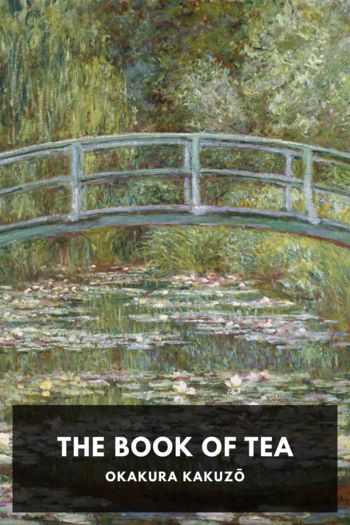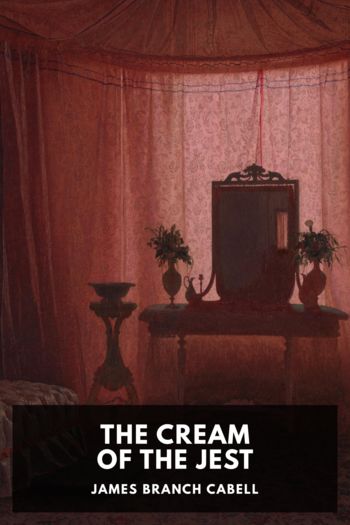Chocolate Sarah Moss (best fantasy books to read .txt) 📖

- Author: Sarah Moss
Book online «Chocolate Sarah Moss (best fantasy books to read .txt) 📖». Author Sarah Moss
Marketing chocolate to men: Nestlé’s (formerly Rowntree’s) Yorkie bar.
While chocolate is increasingly marketed to women as satisfying sensual or sexual appetites, to men it is still marketed mainly as it was in adverts for cocoa in the nineteenth century, satisfying a simple bodily appetite: a ‘manly’ hunger for food. Rowntree’s (and now Nestlé’s) Yorkie bar is the iconic case in point. Since its appearance in 1976, the bar has always been marketed to men, until recently drawing on US Marlboro-man type images of rugged and independent masculinity, such as truck drivers. Real men do not eat chocolate on sofas (and we darkly suspect that men who nibble it whilst writing cultural history books at their computers are barred from the club as well). In the 1990s, this acquired a more tongue-in-cheek aspect in adverts about an escaped convict, who was considered especially resourceful and dangerous because he had a Yorkie bar. Eating a Yorkie bar had become a manly act in itself. In 2001 Yorkie adverts finally cut to the chase with the slogan ‘It’s not for girls.’ Besides the humour in Yorkie’s embrace of the schoolyard-style claim – which Nestlé’s web-site assures us ‘resonates with today’s British male’ – the campaign claims to address men’s sense of marginalization. ‘In today’s society, there aren’t many things that a man can look at and say that’s for him.’ Those watching adverts during sporting events, of which Yorkie sponsors a number, might be baffled at this claim, but the main thrust of the adverts is the bar’s power as a ‘hunger buster’. Ironically, it is in selling chocolate to men, not to women, that size matters: ‘With fivesolid chunks of chocolate, it’s a man-sized eat!’ In the land of chocolate, only women get fat: men just get hungry.
Notably, in the Western world, advertising visions of chocolate as sexual indulgence are directed almost exclusively at white women. Given the enduring and often overt racial overtones of chocolate, the implied ‘sin’ in a number of adverts is miscegenation. Chocolate is often presented to women in adverts by dark-skinned men in ‘native’ clothes, suggesting at once subservience and invoking ideas of ‘native’ sexual prowess. Similarly, when black women appear associated with chocolate, they are normally not the consumer but the (sexually) consumed. In 1996 Suchard chocolates produced an advertisement in France that showed a black woman, Tyra Banks (who made headlines most recently with an on-air feminist rant about women’s body image), dressed only in small pieces of gold foil that look like the remnants of a chocolate wrapper and that also enhance the ‘exotic’ image by resembling tiger stripes. The caption of the advert read, ‘Even though you said no, we heard yes.’ While French adverts normally feature more nude female flesh and overt references to sex than those in the US or Britain, the clear reference to rape in the advert crossed a line. After a vigorous protest from women’s groups, the designer apologised and the advert was withdrawn. Significantly, the racial element of the advert received little or no mention within the ensuing controversy.
Another ambiguous confrontation with the ‘chocolate as black woman’ theme came on Dutch television following the announcement in 2006 that the manufacturer of chocolate marshmallow confections known as ‘Negro kisses’ were changing the name to ‘kisses’. Much of the public discussion around the change was about whether it was a matter of political correctness gone mad, and many who had grown up with the confection made no conscious connection between the sweettreats of their childhoods and disparaging racial images. The night the story made the television news, the newsreader Aldith Hunkar, who is of Afro-Caribbean origin, changed her regular sign-off. After she had wrapped up with most of the standard phrases, she paused, a mischievous smile spread over her face and she said, ‘and the last negro kiss you get from me’ and aimed a kiss at the camera. Judging from the discussion that ensued, anti-PC audiences saw this as evidence that she was on their side, and that her presence as a successfully integrated part of Dutch society was proof that the racial prejudice and inequality suggested by the name had long since disappeared. The shock it caused, however, with its reminder that the term still invokes images that apply to real people, made the light-hearted gesture seem far more ambiguous.
That ambiguity, or rather series of ambiguities, offers as good a summation as any of the current place of chocolate in our lives and indeed throughout much of its history. It remains a puzzling mixture between familiar and exotic, global and local, guilty pleasure and overlooked injustice. Its various stories disappear and reappear in sometimes unexpected times and ways. In describing their work as the ongoing construction of an idea and a myth, chocolatiers Amadei have come closest, and perhaps closer than intended, to capturing the various things chocolate means: ‘The chocolate is an idea in which white and black blend; the pleasure and the transgression blend in lines and curves. We follow the emotions that transform the chocolate into the most precious myth, one which holds together childhood memories and the satisfaction of senses.’
Recipes
Chocolate and Lavender Cream
This is chocolate at its most deracinated. The use of herbs in sweet foods is an English habit going back to the Middle Ages, although perhaps also borrowed from the Middle East, and lavender has recently returned to fashion in food as well as perfume. All the ingredients except the chocolate are foreign to the New World. (Some consequences of globalization are to be celebrated.)
Serves 8
250 g (8 oz) granulated sugar
250 g (8 fl oz) white wine
juice of ½ lemon
600 ml (1 pint) double cream
1 or 2 lavender stems, with flowers
165 g (5½oz) good plain chocolate, grated
Mix the





Comments (0)